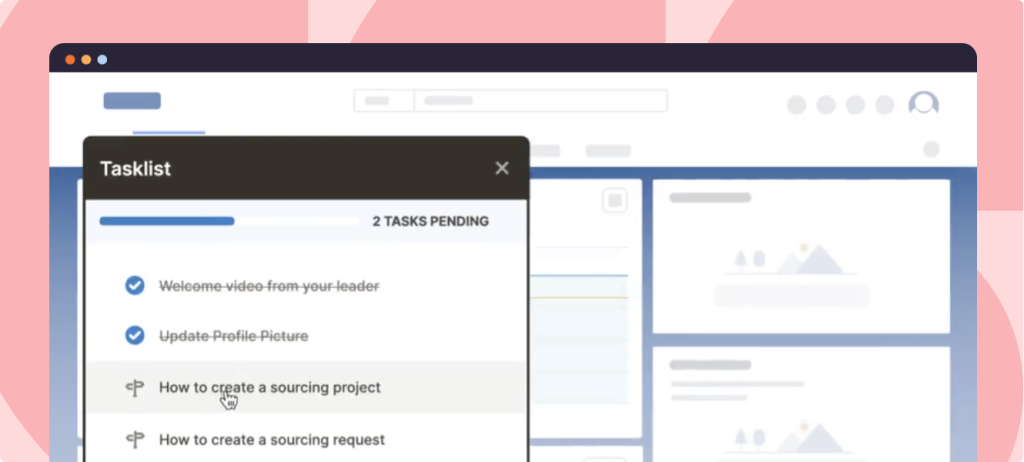As HR transformation changes the way human resources operate, new models have emerged that empower organizations to enable employees with better experiences and services.
An HR shared services model provides organizations solution to separate the operational-side of HR from the strategic side by centralizing HR administrative and operational tasks into a single in-house unit or outsourced to a third-party group. It’s part of an overall a more comprehensive HR service delivery model that allows the rest of the HR department to focus on more strategic initiatives.
This article explores the concept of HR shared services, its benefits, challenges, and critical considerations for organizations considering an HR shared service model implementation.
What Are HR Shared Services?
HR shared services separates the essential HR administration and operational tasks of a large organization from the strategic initiatives, usually owned by a third-party HR management company or a separate internal HR shared services team that leverages HCM systems to automate administration tasks and use employee self-service capabilities to create a more efficient workplace and better employee experience.
In an HR shared services model, all operational and admin HR tasks, like payroll, benefits administration, employee data management, and recruitment, are consolidated into a single, centralized HR unit that serves the entire organization. This model aims to increase efficiency, reduce costs, and ensure consistency in HR service delivery across different locations or business units.
Key Functions of HR Shared Services
Here are the key people-related functions managed by centralized HR shared services:
- Employee data management: Employee data management involves the centralized collection, maintenance, and updating of employee information. This includes personal details, employment history, job roles, and compensation data. Centralizing employee data ensures that information is accurate, secure, and easily accessible.
- Payroll: Payroll encompasses the processing of employee salaries, bonuses, and deductions. By centralizing payroll services, organizations ensure payment consistency and accuracy across all locations and departments. This centralization also facilitates compliance with tax laws and labor regulations, reducing the risk of errors and penalties.
- Benefits administration: Benefits administration involves managing employee benefits programs, such as health insurance, retirement plans, and other perks. Centralizing benefits administration enables streamlined management and consistent application of benefits policies across the organization.
- Performance management: Performance management includes the centralized administration of performance appraisals, goal-setting, feedback, and employee development plans. Centralizing these processes ensures consistency in employee performance evaluation, supports better talent development, and helps identify high performers for succession planning.
- Recruiting: Recruiting involves the centralized management of talent acquisition processes, including job postings, candidate screening, interviewing, and onboarding process. Centralizing recruiting functions allows organizations to standardize hiring practices, ensure compliance with employment laws, and leverage technology to streamline the recruitment process.
- Learning and development: L&D focuses on employee training programs, professional development, and continuous learning opportunities for employees. Centralizing L&D allows organizations to deliver consistent training programs, track team member progress, and align learning initiatives with organizational needs.
- Onboarding: Centralized onboarding includes managing orientation programs, completing necessary paperwork, and providing access to resources and training material. A well-structured onboarding process helps new employees acclimate to the company culture, understand their roles, and become productive more quickly.
Benefits Of HR Shared Services
Implementing HR shared services drives quite a few tangible benefits for your organization.
1. Process consistency
By consolidating HR functions into a centralized unit, organizations improve the uniformity of HR processes and facilitate better compliance with policies and regulations. HR shared services can focus on building process governance in their people-related workflows, automate them with HCM systems, and analyze and optimize these processes over time by identify areas of friction and improving inefficiencies.
2. Enables HR to focus on more strategic initiatives
The key objective behind implementing an HR shared services model is offloading transactional and administrative tasks to automation or outsourced teams. This enables your core HR and people management team to focus on strategic initiatives such as employee development, employee experience design, succession planning, and more.
3. Improves institutional knowledge
HR shared services offer various communication channels, such as intranet software, employee self-service portals, email communications, and training sessions, to make company policies accessible to everyone in the organization. This centralized approach to policy management makes it easier to communicate internal policies, interpret them, and reinforce policy compliance – enable your company to capture and manage institutional knowledge better.
4. Increased employee involvement in HR-related processes
Centralization of HR functions breaks the silos between HR and other departments. It empowers employees to actively manage their HR-related processes, such as accessing and updating their personal information, submitting requests for leave or benefits, viewing pay statements, and participating in performance management activities.
By making these processes more accessible to people outside the HR department, organizations reduce HR workload and foster transparency and trust in the workplace.
5. Cost reductions
There are many ways HR shared services contribute to cost reductions. However, reducing administrative workload is probably the most significant outcome of centralizing HR activities, which directly leads to cost savings.
Implementing a centralized HR hub allows you to hand over repetitive HR tasks to technology and increase operational efficiency without increasing your team’s headcount.
6. Drives employee efficiency
HR shared services eliminate workplace bureaucracy and give every team in the organization more autonomy. They enable employees to complete HR activities faster, e.g., request paid time off (PTO) in a few clicks or complete on-demand training without leaving their system, saving time and increasing productivity.
How to Implement HR Shared Services In Your Organization
Looking to implement HR shared services for your organization? Here are a few steps to help you get started.
1. Identify organizational needs
The first step in implementing HR shared services is to thoroughly assess the current HR processes and identify the organization’s specific needs. Try to answer these questions:
- How are your HR activities structured at the moment?
- What challenges are you facing?
- Which HR tasks have the most substantial potential for standardization?
- Where will you benefit most from making improvements?
Furthermore, conduct interviews with key stakeholders and collect feedback from employees to get valuable insights into the areas of improvement and the services to prioritize.
2. Define objectives
What do you want to achieve by implementing HR shared services? Perhaps you expect to streamline processes, enhance employee experience, or reduce costs.
Whatever your objective is, make sure it’s measurable and achievable. For example, instead of a broad objective like “improve HR services,” a SMART goal could be “reduce HR service response time by 30% within six months.”
Align the HR shared services initiative with your organization’s overall objectives. Think of how HR can contribute to achieving strategic goals, such as cost reduction, increased operational efficiency, improved employee experience, or better compliance with regulations.
3. Create a digital roadmap
A digital roadmap outlines the digital tools, systems, and platforms to centralize HR functions, such as HR Information Systems (HRIS), payroll software, and employee self-service portals.
It also includes the timelines, milestones, and resource allocation for the implementation process. A well-structured digital roadmap ensures that the transition to shared services is smooth and that all necessary technology is in place to support the new model.
4. Develop a change management strategy
Implementing HR shared services often involves significant changes in how HR functions are delivered, which can lead to resistance from employees and managers. Developing a robust change implementation strategy is crucial to addressing this resistance to change and ensuring the transition is accepted across the organization.
The change strategy must include clear communication plans, stakeholder engagement, and support mechanisms to help employees adapt to the new model. Training sessions, workshops, and regular updates can help ease the transition and foster a culture of acceptance.
5. Implement technology and infrastructure
The next step is implementing the necessary technology and infrastructure to support the HR shared services model. This includes setting up the HRIS, integrating payroll and benefits systems, and launching employee self-service portals.
It’s essential to ensure these systems are scalable, secure, and capable of integrating with other enterprise platforms. During this phase, thorough testing should be conducted to identify and resolve technical issues before full-scale rollout.
6. Develop a training program to adopt a new model
There is no point in implementing the HR tech stack when your workforce cannot use it to its full potential. Therefore, developing a comprehensive training program is essential to ensure that HR staff and other employees are well-equipped to use the new systems and processes associated with the HR shared services model.
To develop the training program, assess your employees’ current skills. Consider the existing skill levels, familiarity with technology, and the knowledge gap related to the new HR shared services model.
To bridge the knowledge gap, select the appropriate training methods based on the nature of the content and the learning preferences of your employees. The easiest way to provide personalized technology training is by using a digital adoption platform (DAP) such as Whatfix.
With Whatfix, you can easily create and integrate in-app guidance workflows directly within the HR software. With tooltips, product walkthroughs, and self-help widgets, employees can quickly adopt new HR technology and start using it to its full potential. Furthermore, tools like Whatfix Mirror make it possible to create replica sandbox environments of enterprise software applications that allow employees to learn with hands-on experiences on real workflows without impacting the company data and performance.
7. Pilot phase approach to adopt new HR processes
Once you’ve defined the scope of work and developed an action plan, follow a phased approach to adopt a new HR model.
Begin with a pilot phase to test the new HR processes in a controlled environment. Select a specific department, team, or location to serve as the pilot group. Implement the new processes and closely monitor their effectiveness. Gather feedback from pilot participants to identify areas for improvement and make necessary adjustments.
Once the pilot phase proves successful and the new processes have been refined, expand the implementation to additional use cases or departments. Gradually roll out the new processes in subsequent phases, ensuring proper training, communication, and support are provided at each stage.
8. Roll out and monitor performance
The final step is to roll out the HR shared services model across the organization and monitor its performance. This involves tracking the KPIs established earlier to measure the success of the implementation.
Regular performance reviews and feedback loops must be established to identify areas for improvement and make necessary adjustments. Monitoring performance ensures that the HR shared services model meets the organization’s objectives and delivers the expected benefits.
Best Practices for Effective HR Shared Services
Let’s discuss some practical best practices to enable HR shared services within your organization.
1. Establish clear service level agreements (SLAs)
Establishing clear Service Level Agreements (SLAs) is essential for defining the expectations between the HR shared services center and the business units it serves. SLAs outline the scope of services, performance standards, and response times, ensuring that the service provider and the recipients understand the service quality.
SLAs must be detailed and measurable, covering key aspects such as timeframes for payroll processing, response times for employee queries, and accuracy standards for data management.
2. Implement continuous improvement processes
Continuous improvement processes for HR shared services involve regularly gathering feedback from employees and managers, analyzing service performance data, and identifying areas for enhancement.
Continuous improvement may involve refining existing processes, adopting new technologies, or adjusting service delivery methods to align with business goals. Process improvement methodologies such as lean manufacturing or six sigma can streamline processes, eliminate inefficiencies, and improve service quality over time.
3. Leverage data and analytics
By tracking key performance indicators such as service delivery times, employee satisfaction, and cost savings, organizations can identify trends, assess service quality, and pinpoint areas for improvement.
Advanced analytics can also help predict future HR needs, enabling proactive management of resources and services. Data-driven decision-making ensures that HR shared services are not only efficient but also aligned with the organization’s strategic objectives.
4. Ensure effective communication and collaboration
Regular meetings, clear communication channels, and collaborative platforms help ensure that everyone is aligned and that any issues are addressed promptly. Furthermore, involving business units in designing and refining shared services helps enhance buy-in and effectiveness.
Challenges Of HR Shared Services
When you decide to switch to HR shared services, you should be ready to face the following challenges.
1. Implementing new technology
Implementing new technology means deploying new systems and ensuring that these systems integrate seamlessly with existing platforms. The implementation process can be complex and time-consuming, requiring careful planning, testing, and troubleshooting to avoid disruptions in HR service delivery.
Additionally, employees often resist adopting new technologies, further complicating the transition.
To overcome this challenge, consider implementing a digital adoption platform like Whatfix that empowers HR and IT leaders with a no-code visual editor to create in-app guidance and end-user support inside the HCM, ATS, and other HR applications. This provides contextual moment-of-need support for end-users working through custom HR workflows.

2. Lack of the necessary knowledge in the organization
A lack of necessary knowledge might arise when the organization lacks the expertise required to effectively design, implement, and manage the shared services model.
HR teams might struggle with process standardization, technology integration, and change management without the right knowledge. This gap often necessitates hiring external consultants or investing in extensive training programs, which can be costly and time-consuming.
3. Justifying the costs
Justifying the costs associated with implementing HR shared services can be a hurdle, particularly in organizations with budget constraints. The upfront investment required for technology, training, and change management can be substantial, and the benefits of shared services, such as cost savings and efficiency gains, may not be immediately apparent.
This challenge is compounded by the need to demonstrate a clear return on investment (ROI) to stakeholders, who may be skeptical about the initiative’s long-term value.
4. The need for IT support
HR shared services initiatives typically rely heavily on technology. Hence, successful implementation requires strong collaboration between HR and IT departments to ensure that the technology infrastructure supports the shared services model. However, IT teams are often stretched thin, managing multiple priorities across the organization, leading to delays in implementation and ongoing support.
Additionally, the complexity of integrating multiple HR systems and ensuring data security can significantly burden IT resources. Ensuring adequate IT support is crucial for the success of HR-shared services, but it requires careful coordination and resource allocation.
HR Transformation Clicks Better With Whatfix
Implementing HR shared services is a strategic move that can streamline processes, reduce costs, and enhance the overall efficiency of your HR operations. However, the transition to a shared services model comes with its own set of challenges, including the need for new technology, managing change, and ensuring ongoing support and training.
Whatfix DAP provides a powerful platform to accelerate your HR transformation efforts, offering in-app guidance, user analytics, and personalized support to ensure that your HR technology is fully adopted and optimized. With Whatfix, organizations can seamlessly transition and maximize the effectiveness of shared services, empowering their workforce and driving sustainable business growth.
To learn more about Whatfix, schedule a free demo with us today!














